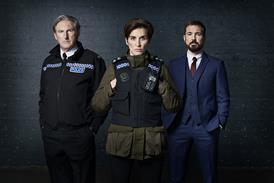We test the latest wearable cameras from Sony, Drift and GoPro to find out which can withstand the most punishment and produce the best images.
SONY HDR-AS10
- Price £260
- Video res 1920x1080p at 30fps; 1280 x 720p at 30fps, 60fps and 120fps; 680x480p at 30fps
- Memory Memory Stick Micro; Micro SD/SDHC
- 1 minute 1080 record = 117mb
- Format MPEG4-AVC/H.264
- Output HDMI, Micro-B/USB2.0
- Weight 90g
Design & operation
The menu is simple to scroll through and the Wi-Fi is the easiest of the three to set up.
However, you are slightly limited to what settings you can control wirelessly. The biggest downside is an inability to turn off the camera or change any settings manually without first removing it from its waterproof case, which is not always a sensible idea in some environments.
Build quality, mounting & accessories
The camera feels well-made and the housing has a quality feel to it. The shape of the camera is also more aerodynamic than the GoPro or the Drift meaning in professional circumstances competitors are happier to carry the cameras.
The shape of the camera is also more aerodynamic than the GoPro or the Drift. But the mounts don’t give you many angles to play with and it’s a shame that to get any tilt you have to buy an extra accessory.
Image quality
Video is sharp and vibrant and stands out compared with the others in low-light conditions.
With Steady Shot technology built in, it produces the best video in this comparison, especially as it films in slow motion (60fps) and super-slow (120fps) at 720p.
The sound quality is also superior to both the other cameras. Unfortunately the stills are not so good with a lot of noise on the images.
DRIFT HD GHOST
- Price £300
- Video res 1920x1080p at 25fps and 30fps; 1280x960p at 25fps, 30fps, 48fps and 50fps; 1280x720p at 25fps, 30fps, 50fps, 60fps; WVGA up to 120fps
- Memory Micro SD up to 32GB
- 1 minute record at 180p = 100mb
- Format MPEG4-AVC/H.264
- Output HDMI type C; USB Plug and Play; mini-B USB connector
- Weight 167g
Design & operation
Rubberised and waterproof to 3m without any housing. The built-in colour screen makes operation and monitoring the easiest of the three devices.
It also has the most control and options with exposure settings the others don’t have plus the ability to zoom in and out as well as change the field of view.
The battery is larger than the other two resulting in the ability to use it for longer between charges. For wireless operation, there is an easy to set up iOS app, but the Android version is not yet available.
Build quality, mounting & accessories
The camera feels well made – it is the biggest and heaviest of the three, but it doesn’t need any housing.
It comes with the most mounting options and accessories, including a goggle mount, curved and flat adhesives and a Velcro strap that works with the adhesive brackets.
The mount is on the side of the camera.
Image quality
The image quality is an improvement on previous Drift devices, but it still lacks the detail and natural colour reproduction of its rivals. The stills are certainly the sharpest of the three cameras.
GOPRO HD HERO3: SILVER
- Price £280
- Video res 1920x1080p at 24fps and 25fps; 1280x960p at 25fps, 48fps and 50fps; 1280x720p at 25fps and 50fps; WVGA up to 120fps
- Memory Micro SD up to 64GB
- Format MPEG4-AVC/H.264
- 1 minute record at 1080p = 107mb
- Output Micro HDMI
- Weight 73g
Design & operation
The menu system is better than previous devices from GoPro, but with only two buttons it can still be frustrating to scroll through.
It’s disappointing to have to upgrade the camera’s firmware to use the app, but once set up it’s excellent, giving you full control over every setting from up to 5 metres away.
The free CineForm software is useful for clipping your rushes before using editing software.
Build quality, mounting & accessories
Thankfully GoPro hasn’t changed the mounting system for the Hero3.
With the mounting system not changing in years there is an array of mounts available made not just by GoPro but many third party companies.
The housing has been improved, with a flat lens eliminating the underwater focusing issues of old and a beefed-up clip that keeps the housing firmly shut and watertight.
Image quality
The Hero3 Silver has essentially the same specs as earlier GoPros, but with an improved slim design.
The ProTune option available on updated firmware on the Hero2 now comes as standard, increasing the bit rate of the images and producing RAW video.
Those that own the Hero 2 could skip this model in favour of the higher resolution and more expensive Hero3 Black model - if you can get your hands on one!
VERDICT
This is no longer a category dominated by GoPro, with rival manufacturers learning from it and improving their own kit.
The Sony produces good image quality and is close to being a great design, but the price and options of the mounting accessories are a little disappointing.
The Drift HD Ghost is the easiest to use straight out of the box, and if Drift could get the image quality up and the weight down this would be the clear winner.
At this price point the Sony has my vote; however, if like me you already have a plethora of GoPro bits and pieces already sitting around then it makes sense to stick with the Hero3.
Thanks to Sony, Drift and Action Cameras for supplying the cameras.


























No comments yet